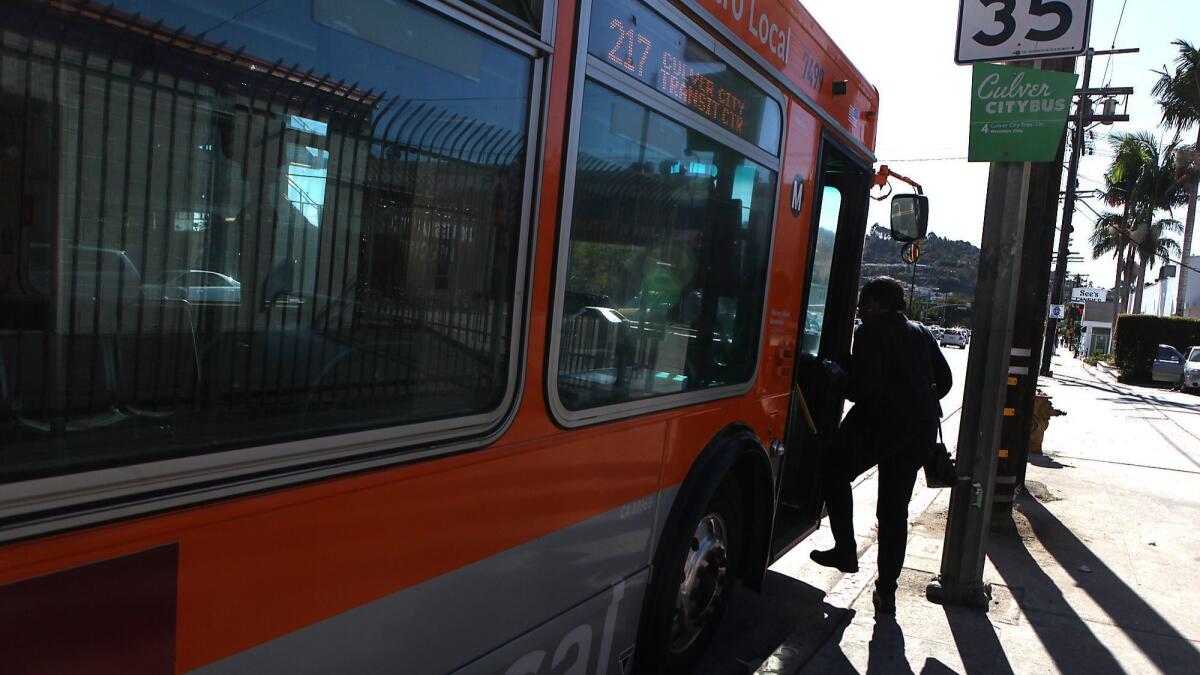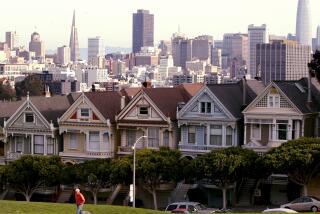L.A. votes to fight state lawmaker’s push for high-density housing

The Los Angeles City Council voted Tuesday to oppose a bill allowing residential buildings of four to eight stories on streets near public transit, despite objections from business leaders and groups that favor higher-density housing.
The 13-0 vote makes L.A. the largest municipality in California to come out against Senate Bill 827, which would loosen or eliminate restrictions on height, density, parking and design for residential projects near bus and rail stops.
Councilman Paul Koretz, who represents much of the Westside, called the bill “pure insanity.” And Councilman David Ryu, who wrote the resolution opposing the bill, said it would result in the widespread displacement of renters, generating “a housing boom for a privileged few and eviction notices for everyone else.”
“Los Angeles has a long and painful history of displacement in the name of progress, and of well-intended bills that uproot communities and destroy neighborhoods,” Ryu said. “SB 827 is one such bill.”
Business leaders quickly denounced the council’s decision, accusing city lawmakers of failing to take a statewide housing crisis seriously.
“Today’s action is representative of why SB 827 is necessary: cities and counties left to their own devices are happy to uphold the status quo and obstruct new development,” Stuart Waldman, president of the Valley Industry and Commerce Assn., said in a statement issued after the vote.
SB 827 was written by state Sen. Scott Wiener (D-San Francisco) and billed as a way to fight climate change, reduce traffic congestion and address soaring rents and home prices. It allows for taller, denser buildings within a quarter-mile of stops where buses arrive every 15 minutes during rush hour.
The bill also eases or overrides key planning rules on properties that sit within a half-mile of rail and subway stations, as well as stops where two higher-frequency bus routes intersect.
Wiener says his bill offers a series of tenant protections, including 42 months of relocation payments to any family displaced from their apartments as part of an SB 827 project. Developers also would be prohibited from demolishing rent-controlled buildings unless the council passes a law explicitly allowing them to do so.
Renters are already losing their homes, Wiener said, because cities are not producing enough homes. “Our current approach to housing — specifically, building very little housing — is what’s fueling displacement all over our state,” he said after the vote.
Those arguments have not reassured groups that represent renters and low-income families, who contend SB 827 would lead to rampant real estate speculation, with developers demolishing rent-controlled homes and replacing them with more expensive ones.
One opponent called SB 827 “a declaration of war” against South L.A., which is crisscrossed with bus corridors and is almost entirely covered by the “transit-rich” areas identified in the bill.
Homeowner groups and preservationists also oppose SB 827, saying it would undermine protections for historic buildings and eviscerate planning rules for almost half the city’s single-family neighborhoods.
A Times analysis found that in L.A., about 190,000 parcels in neighborhoods zoned for single-family homes are located in the bill’s transit-rich areas. Residences in those neighborhoods could eventually be replaced with buildings ranging from 45 to 85 feet tall, city officials say.
The Times also determined that more than 86,000 rent-controlled buildings, or about 537,000 total units, are located in the transit areas identified by SB 827. What is unclear, however, is how many of those buildings are in locations that already allow high-density residential buildings.
In a preliminary analysis, city planners concluded that SB 827 would have “disproportionate impacts on underserved communities and communities of color.” Mayor Eric Garcetti, for his part, said the bill would effectively rezone much of the L.A. Basin, “putting thousands of rent-stabilized housing units at risk of redevelopment.”
Councilman Mike Bonin, who represents coastal neighborhoods, said state legislators should focus instead on repealing the state’s restrictions on local rent control measures. They also should rework the Ellis Act, which allows landlords to replace their rental units with for-sale housing, he said.
Bonin said L.A. also needs to do its part, by approving new anti-displacement measures and an “inclusionary zoning” ordinance, which would require developers to include a specific percentage of affordable units in their projects. In addition, L.A. needs to have a series of neighborhood-level conversations about where homes should be built, Bonin said.
“Let’s be clear,” he added. “We need more housing.”
Twitter: @DavidZahniser
Twitter: @gaufre
More to Read
Sign up for Essential California
The most important California stories and recommendations in your inbox every morning.
You may occasionally receive promotional content from the Los Angeles Times.












